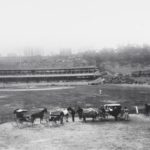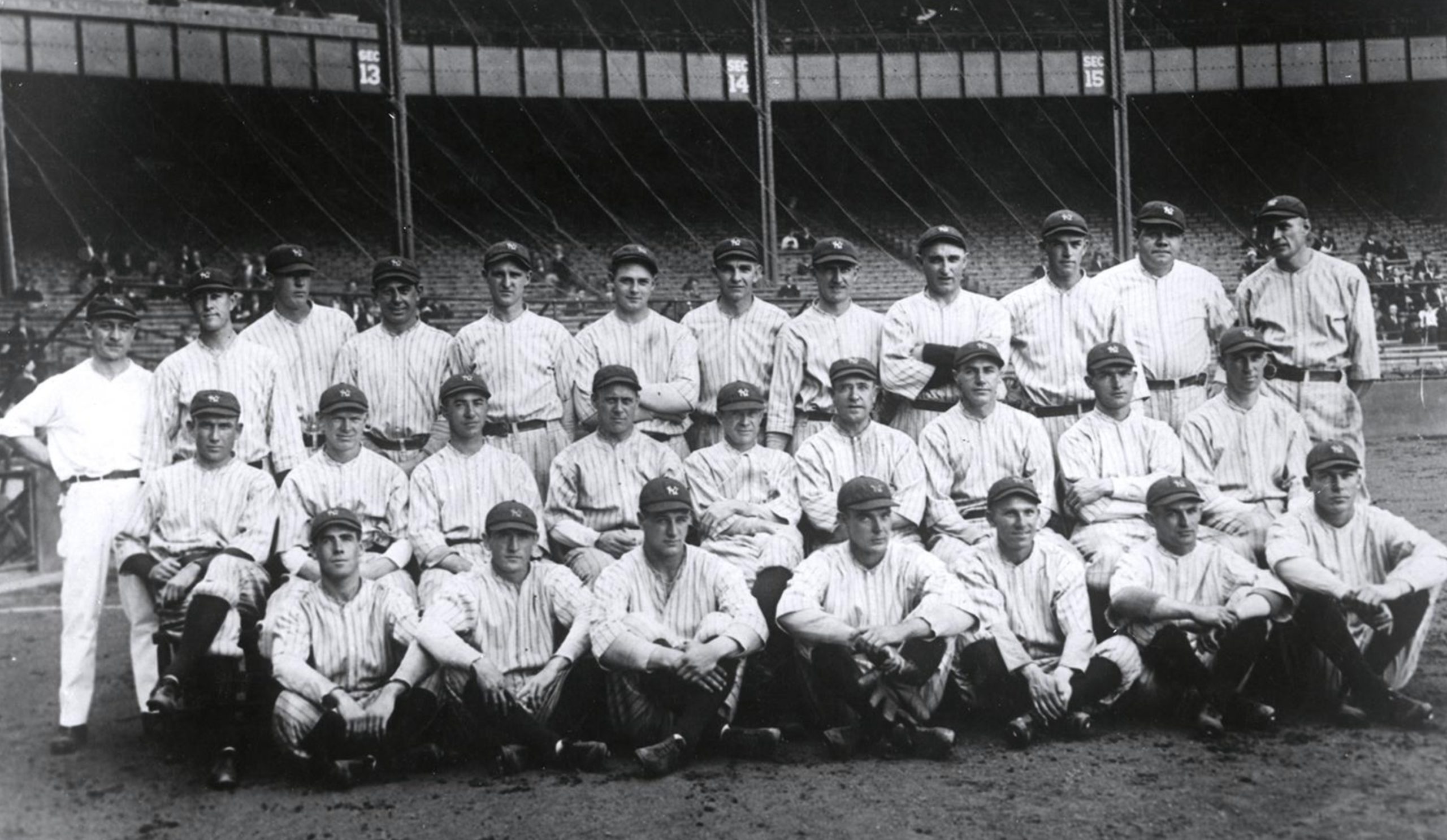The long gone stadium known as the Polo Grounds was home to five different professional sports teams from 1890 to 1963. Originally built in 1876, the venue was intended for the equestrian sport of polo. The site was owned by a newspaper publisher James Gordon Bennett and a German-American financier, August Belmont Sr.

1880: The New York Metropolitans began playing base ball at the “polo grounds” used for the sport of polo and horse racing. The venue was located between 110th and 112th Street, and 5th and 6th Avenue. Since baseball fields, like English soccer fields, were usually called “grounds” in those days, it would later officially become known as the Polo Grounds.

1882: The Metropolitans joined the American Association and played most of their season at the Polo Grounds.
1883: The Troy Haymakers of the National League left the Albany area for Manhattan, moved into the Polo Grounds, and become the New York Gothams.
1884: The Metropolitans won the the American Association pennant


1886: The Metropolitans preferred not to share the Polo Grounds and moved to the St. George Cricket Grounds on Staten Island. After the 1887 season, financial concerns led to the demise of the original New York Mets club.
1887: Harvard and Yale football faced off on Thanksgiving Day at the original Polo Grounds.
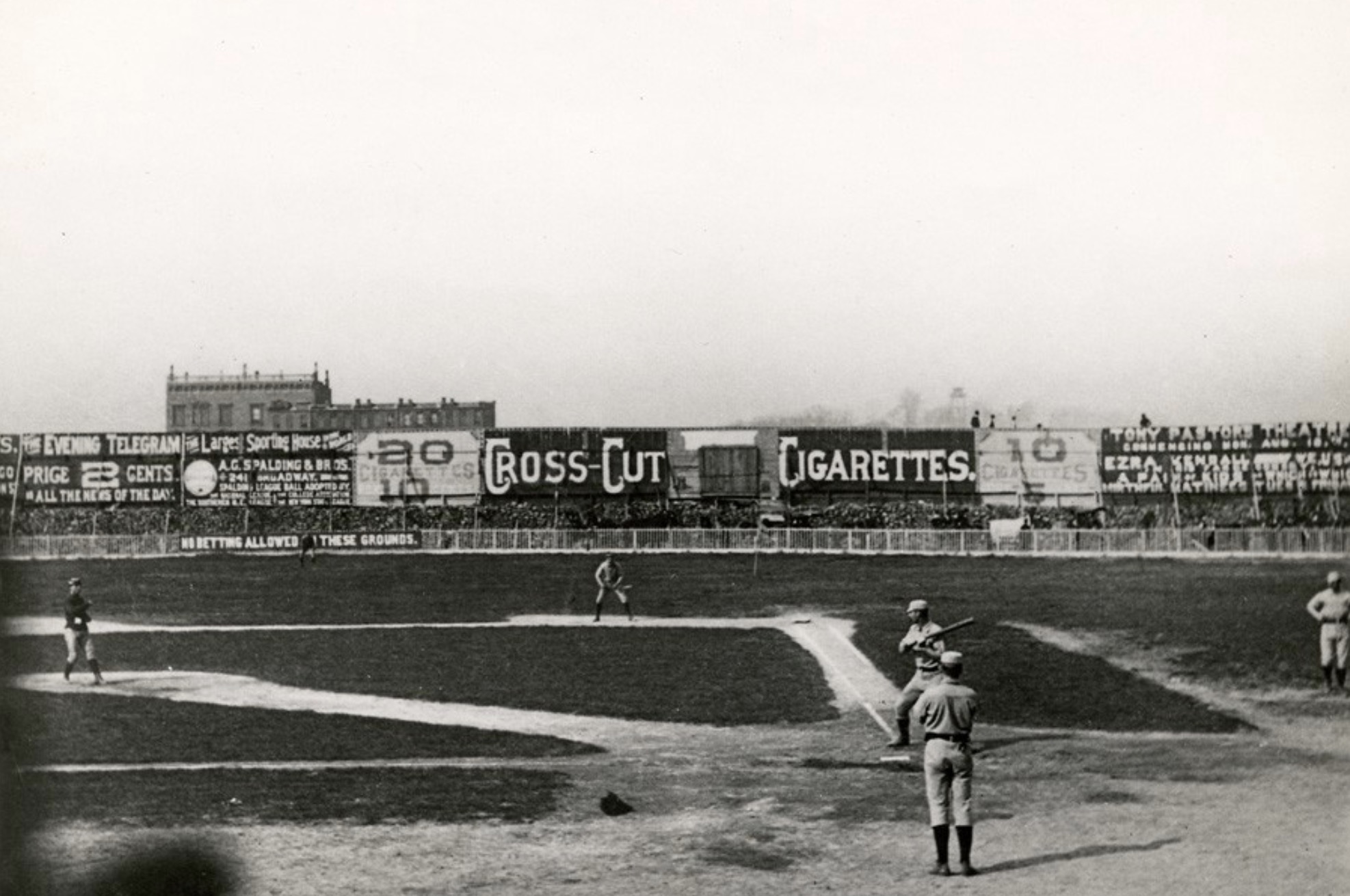

1888: Giants won the National League Pennant.

1889: New York City extended its street grid to West 111th Street, cutting through the Polo Grounds. The New York Giants had to vacate. They moved to the St. George Cricket Grounds again, and won the National League pennant.

1890: A new ballpark was constructed at the terminus of the 9th Avenue Elevated line, at 155th Street and 8th Avenue, and at the foot of Coogan’s Bluff. That same year, the Players League challenged the established leagues. The Players League formed a new team called the New York Giants, and built a larger ballpark next door named Brotherhood Field. That league folded after a season, and the National League Giants moved in. The 1890 ballpark was renamed Manhattan Field, and Brotherhood Field became the new Polo Grounds (II).

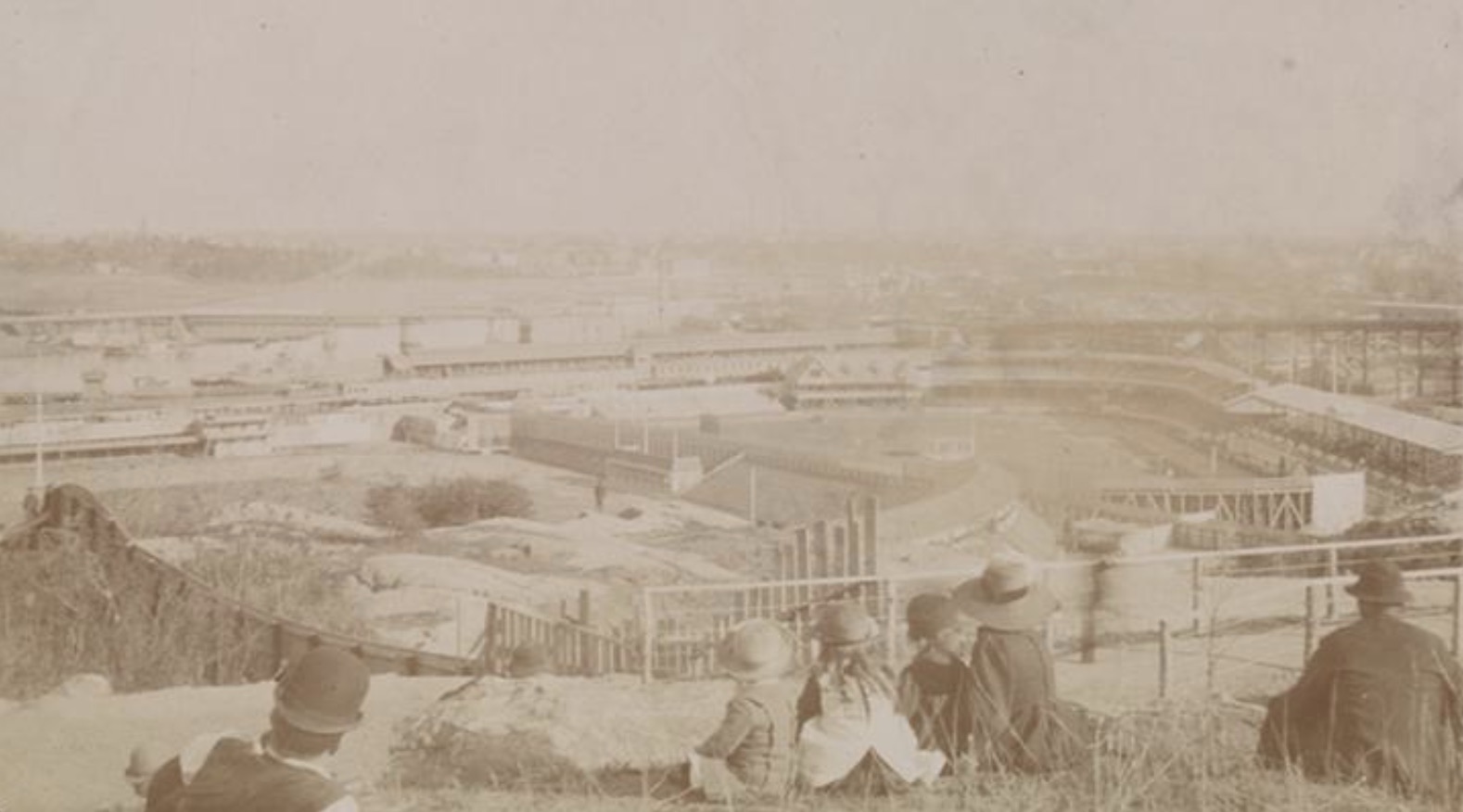

1891: The New York Giants of the National League played their first game at the new Polo Grounds on April 22, 1891. This version of the Polo Grounds had a seating capacity of 16,000. The main double decked grandstand arched around home plate and down the baselines.


1904: The New York Giants hired John McGraw as manager, traded for pitching icon Christy Mathewson and won the NL Pennant.
1905: New York Giants won the Pennant and the World Series.
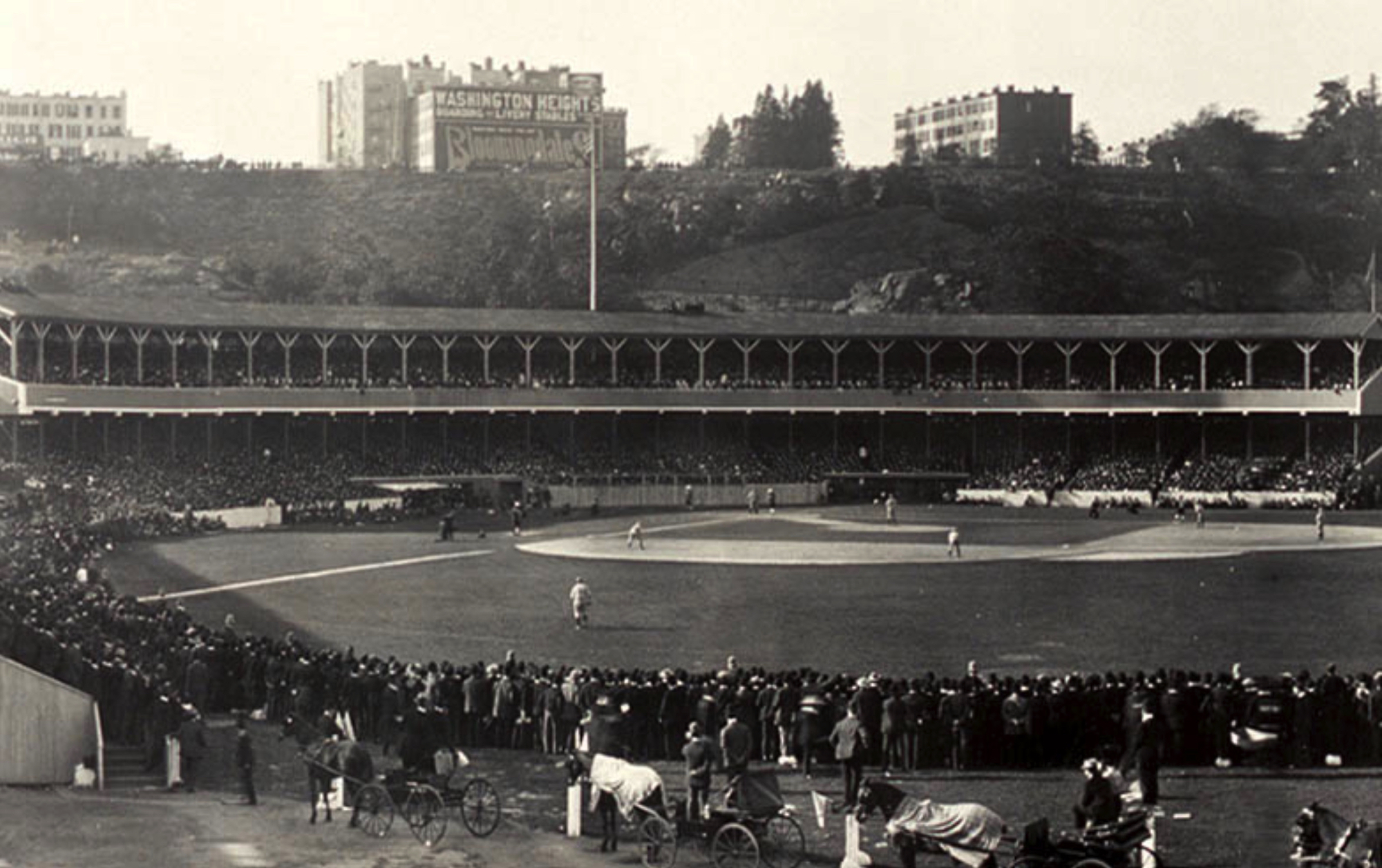



1908: New York Giants lost the pennant to the Chicago Cubs on Fred Merkle’s “Boner”.


1911: The ballpark burned down on April 14, 1911, at the dawn of a new season. As a friendly gesture, the New York Highlanders offered the Giants the use of Hilltop Park while the Polo Grounds was rebuilt in fireproof concrete and steel. Later that year, the Polo Grounds (III) opened. The Giants faced the Boston Rustlers, and won, 3-0. Christy Mathewson pitched, allowed nine hits and zero walks to keep the shutout. A home run was hit by “Laughing Larry” Doyle, a man who once said, “It’s great to be young and a Giant.” (The Rustlers were named for their owner, William H. Russell, who died right after that season ended. They were bought by James Gaffney, who held the rank of “Brave” in New York’s Tammany Hall “political machine,” and the team’s name was changed to the Boston Braves.)
The Giants won the Pennant in 1911, but lost the World Series to the Philadelphia Athletics.



1912: The New York Giants won the Pennant again, but lost the World Series to the Boston Red Sox.
1913: The Giants lost another World Series to the A’s for three straight World Series losses. The only other team ever to do that has been the 1907-08-09 Detroit Tigers.


In 1913, noting that the Highlanders, who had just officially changed their name to what people were already calling them, the Yankees, had their 10-year lease at Hilltop Park ended, offered them a 10-year lease at the Polo Grounds, as a way of thanking them for the use of Hilltop in 1911.



1917: The Giants won another Pennant, but lost the World Series to the Chicago White Sox.
1920: The Yankees signed Babe Ruth, and started bringing more fans into the Polo Grounds than the Giants. McGraw said, “The Yankees will have to move to Queens, or some other faraway place, to wither and die.” Little did he know that, one day, the New York team in the National League would play in Queens.

1921 & 1922: The Yankees won their first two American League pennants, but lost the World Series to the Giants both times. The Giants remained the better franchise, but not for long.
1923: Yankees owner, Jacob Ruppert, planned on vacating the Polo Grounds. He wanted a ballpark that he could control, so he built a stadium across the Harlem River from the Polo Grounds at 161st Street and River Avenue in The Bronx. Yankee Stadium dwarfed the Polo Grounds. When Giants owner Charles Stoneham expanded the Polo Grounds, but it remained smaller than Yankee Stadium. That Autumn, the Polo Grounds hosted the Heavyweight Championship fight in which challenger Luis Firpo knocked Jack Dempsey out of the ring, but Dempsey got back in before the count of 10, and knocked Firpo out. A few weeks later the Polo Grounds hosted another World Series. This time, the Yankees beat the Giants.

1924: The Giants won another Pennant, but lost the World Series to the Washington Senators. Later that year, the football team at the U.S. Military Academy in West Point, New York hosted the University of Notre Dame, and Notre Dame won. Nationally-syndicated sportswriter Grantland Rice covered the game, and named Notre Dame’s backfield “The Four Horsemen,” after the Biblical riders of the Apocalypse.
1925: A football team named the New York Football Giants began playing at the Polo Grounds. They won the NFL Championship in 1927, 1934 and 1938, but lost it in 1944. They moved to Yankee Stadium in 1956.

1933: Baseball’s New York Giants won the World Series, beating the Senators. This team featured slugging right fielder Mel Ott and ace pitcher “King Carl” Hubbell.
1936 & 1937: Giants defeated by the Yankees in the World Series.
1951: The New York Giants came from 13 1/2 games back to beat their archrivals, the Brooklyn Dodgers – winning the pennant in a playoff game, on what we would now call a walk-off home run by Bobby Thomson. However, the Giants lost the World Series to the Yankees.



1954: The Giants won the pennant again, led by Willie Mays, who won the NL batting title. Game 1 of the World Series against the Cleveland Indians featured Mays making his signature over-the-head catch, and a walk-off home run in the 10th inning by Dusty Rhodes. The Giants swept the Series.


1957: The stadium and its surrounding neighborhood had begun to fall apart. The Giants left for San Francisco after the season. Their last game was as 9-1 loss to the Pittsburgh Pirates on September 29.

1960: The American Football League was founded, and the New York Titans began play at the Polo Grounds. They would become the Jets in 1963. The stadium hosted one last title fight, with Floyd Patterson regaining the Heavyweight Championship from Ingemar Johansson.
1962: The New York Mets, a National League expansion team began to call the Polo Grounds home. They played two terrible seasons at the Polo Grounds before moving into Shea Stadium in Flushing Meadow, Queens.
1963: The Mets played the last baseball game at the Polo Grounds on September 18, 1963, losing 5-1 to the Philadelphia Phillies. The last event was a New York Jets football game on December 14, 1963, a 19-10 loss to the Buffalo Bills.

1964: Six days before Shea Stadium opened, the same company that demolished Ebbets Field, used the same wrecking ball, painted to look like a baseball, to demolish the Polo Grounds.
1968: The Polo Grounds Towers opened on the site of the former baseball stadium. It included a playground known as Willie Mays Field. Across 155th Street is Rucker Park, now one of New York’s most famous pick-up basketball sites.

Sources
- Uncle Mike’s Musings: A Yankee Blog and More at Unclemikesmusings.blogspot.com
- www.Baseball-reference.com
- Hartford Courant database on Newspapers.com
